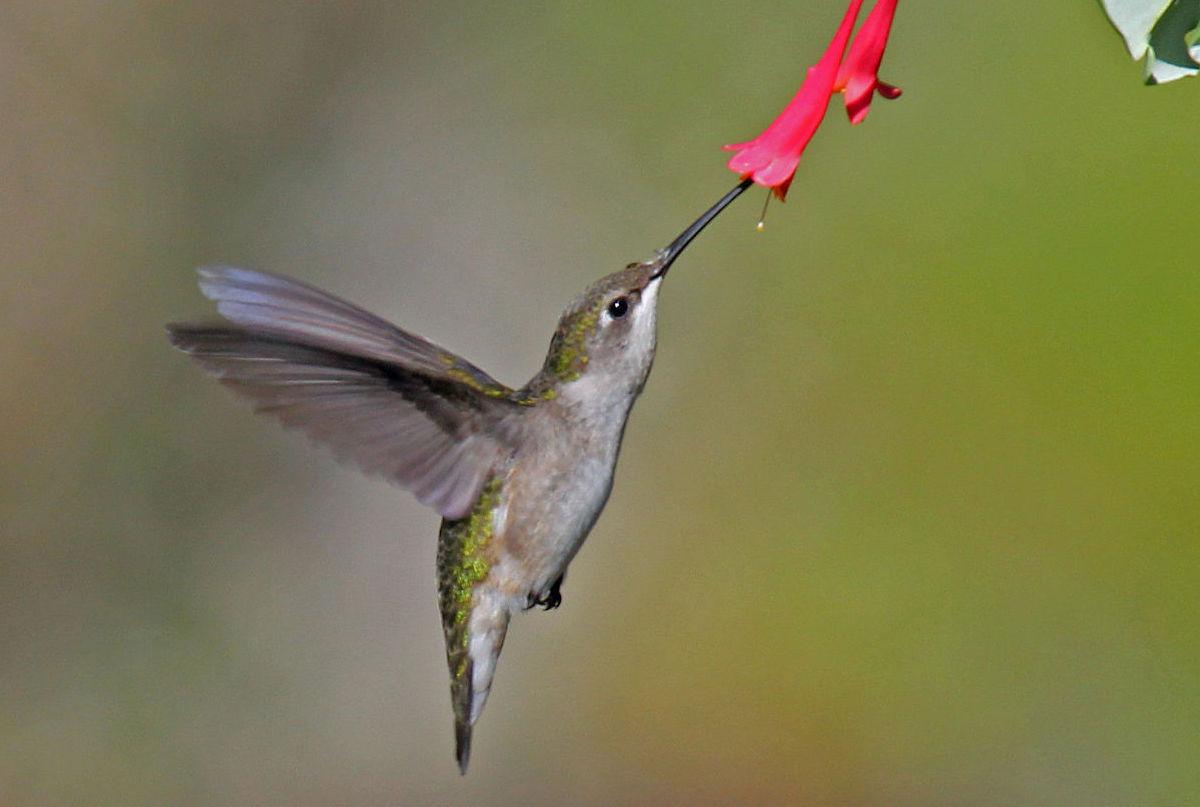Y: How are you liking your new bird feeder, Don?
D: It’s fantastic. Just this morning, I saw five hummingbirds. I was almost late for work because I couldn’t stop staring at their brilliant colors.
Y: All I see around here are sparrows—not exactly as breathtaking. How are hummingbirds so colorful, anyway? What makes their feathers so special?
D: That’s exactly the question some scientists were trying to answer. To find out, they looked at feathers from 35 species of hummingbirds under a transmission electron microscope and compared them with feathers from other colorful but less brilliant birds. The basic structure of all the feathers is the same—they have a central shaft, which branches into parts called barbs, which branch into smaller parts called barbules that resemble little hooks. Barbules are full of melanosomes, which are organelles that produce pigment.
Y: So the pigment melanosomes produce are how hummingbird feathers get their color.
D: Partly, but pigment isn’t the only way melanosomes create color. The way the melanosomes are shaped and arranged affects how light bounces off of them, and, in turn, the colors we end up seeing when we look at bird feathers. Scientists found that, in hummingbird feathers, these melanosomes look like flat discs that contain a lot of air bubbles. This structure creates a lot more surfaces for light to bounce off of, and it’s why we see brilliant, iridescent colors when a hummingbird zooms past us.
Y: Flat discs full of air bubbles—who knew that was the secret to beauty?










